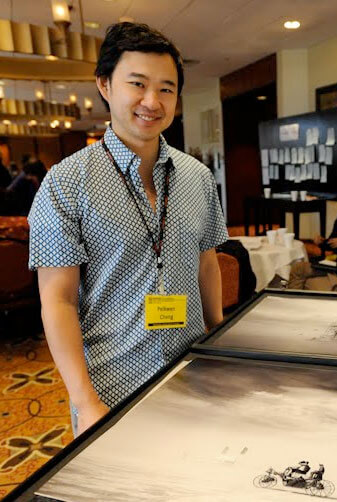Peikwen Cheng studied product design at Stanford University, graduating in 1997. He is a self-taught photographer who has exhibited his work in Cambodia, Canada, China, Germany, Greece, Poland, Singapore, Sweden, Syria, United Kingdom and United States. Before turning his focus to art, he was a designer and was awarded with a United States Design Patent and an Industrial Design Excellence Award by the Industrial Design Society of America. Peikwen Cheng lives in Beijing.
Peikwen Cheng is a Chinese-American artist based in New York and Shanghai. His work explores the process of change across cultures, time and place and seeks to discover magical moments in unexpected places.
His art has been exhibited in Belgium, Cambodia, Canada, China, Luxembourg, Germany, Greece, Poland, Singapore, Sweden, Syria, United Kingdom and the United States; and his work has been featured by BBC, CNN, BBC, Financial Times, The Guardian, National Public Radio, The Sunday Times, and Vogue.
He has been recognized by international awards including the Three Shadows Photography Award, National Geographic Award at the Eddie Adams Workshop, C/O Berlin Talents Award, Renaissance Photography Prize Category Winner, Flash Forward Selected Winner by the Magenta Foundation, Px3, and International Photography Awards. And as a designer, he was awarded with a United States Design Patent and an Industrial Design Excellence Award by the Industrial Design Society of America.
He is a graduate of Stanford University, Tsinghua University and Insead.
Source: Visura
